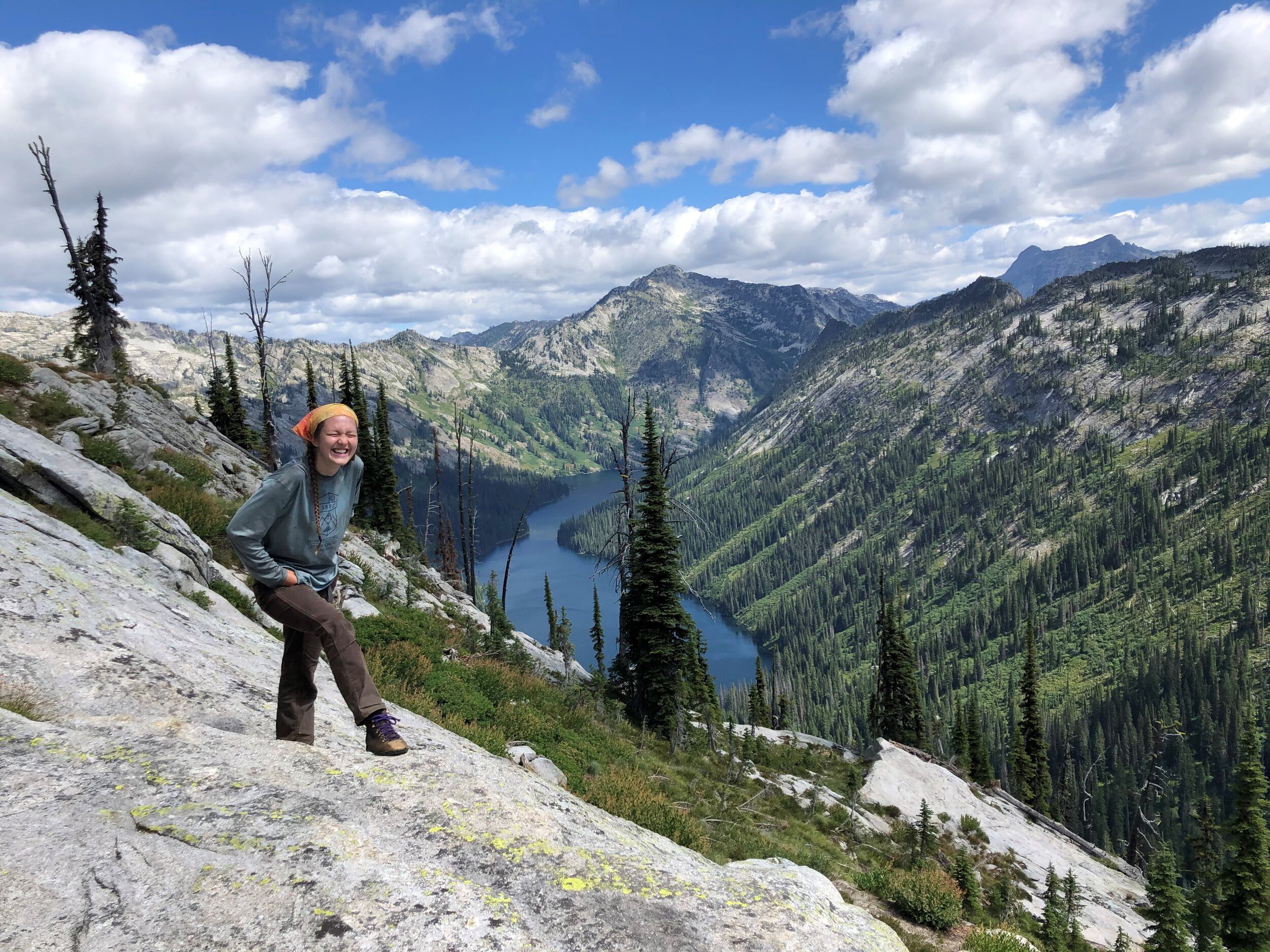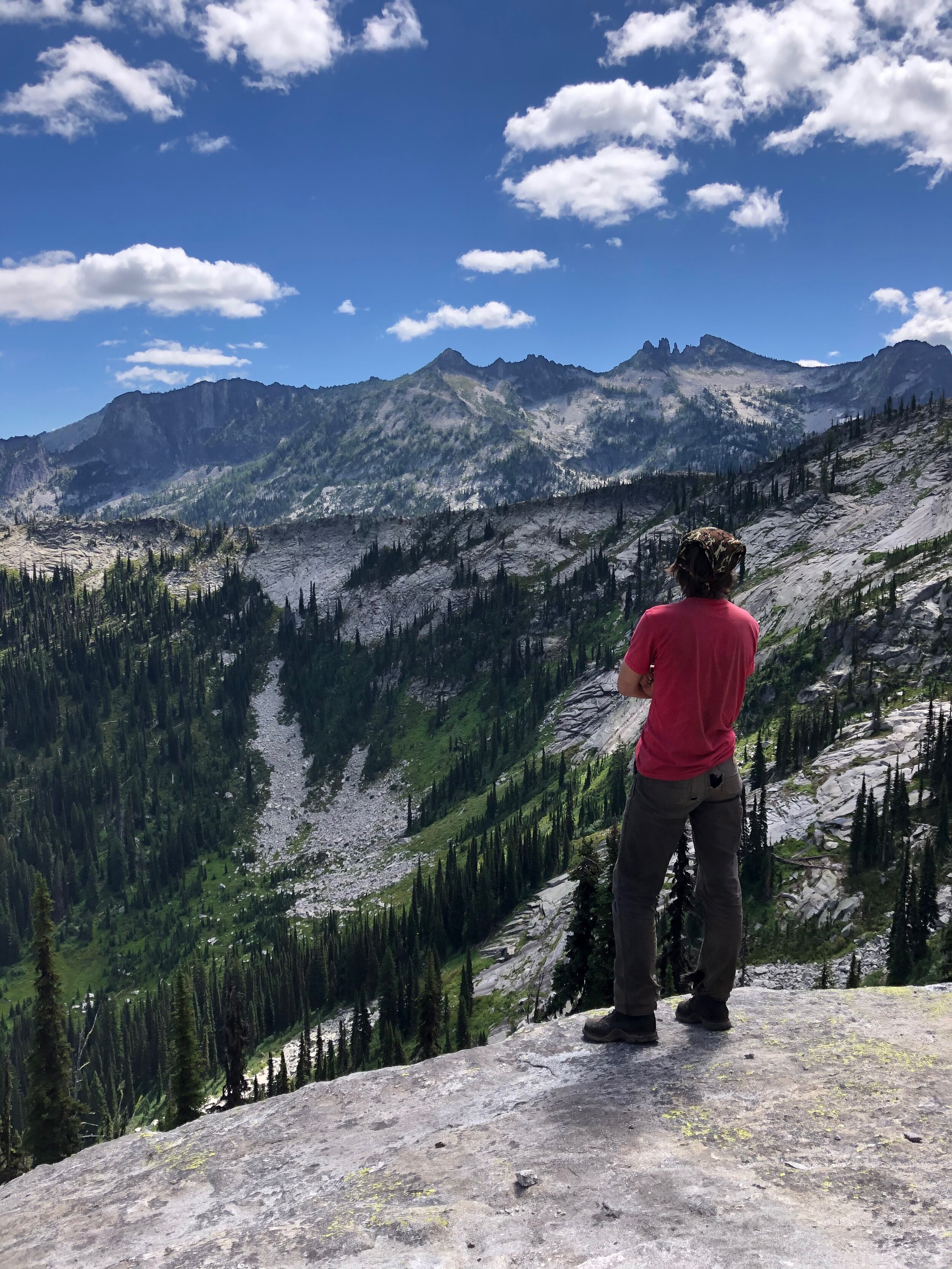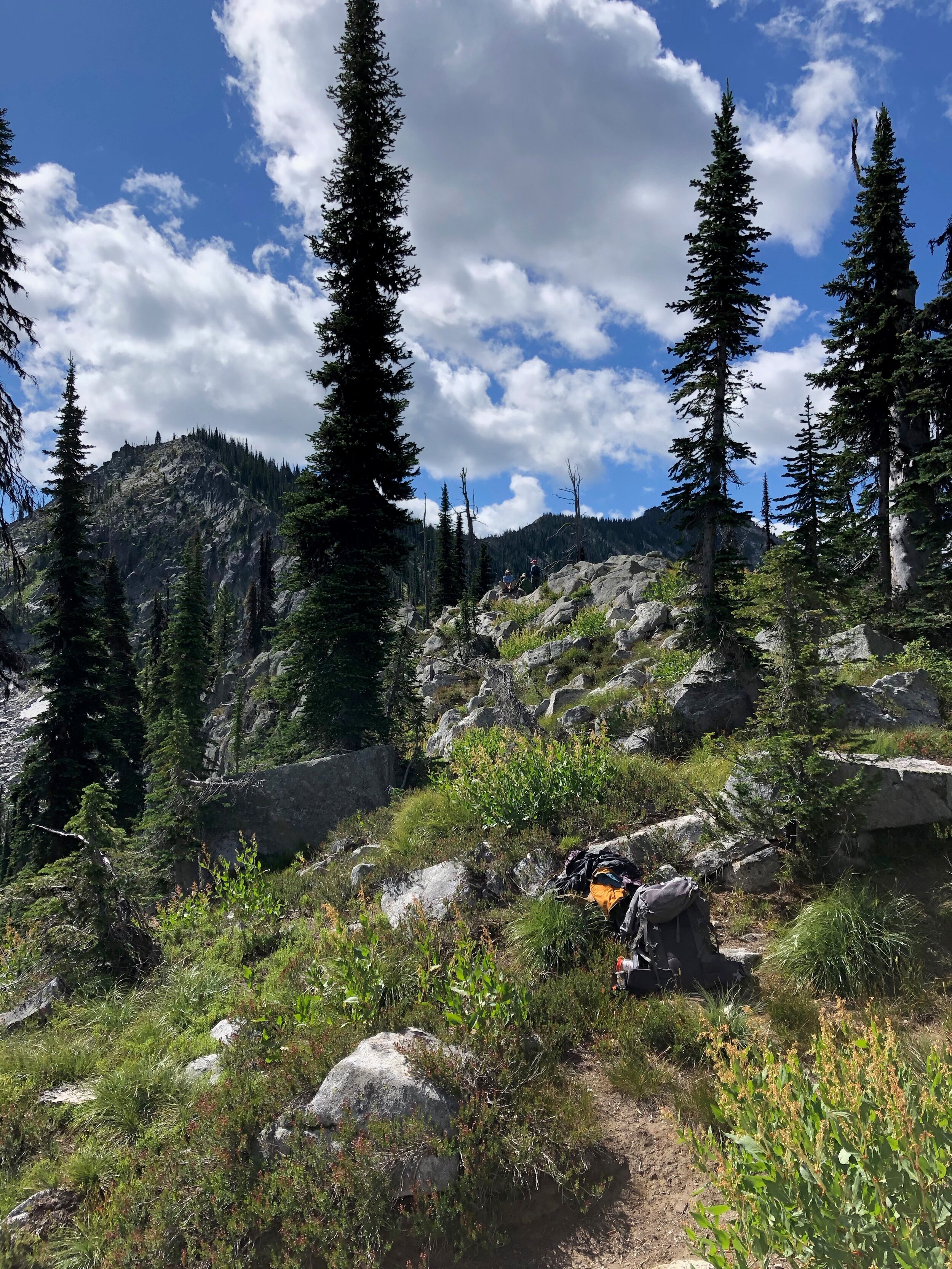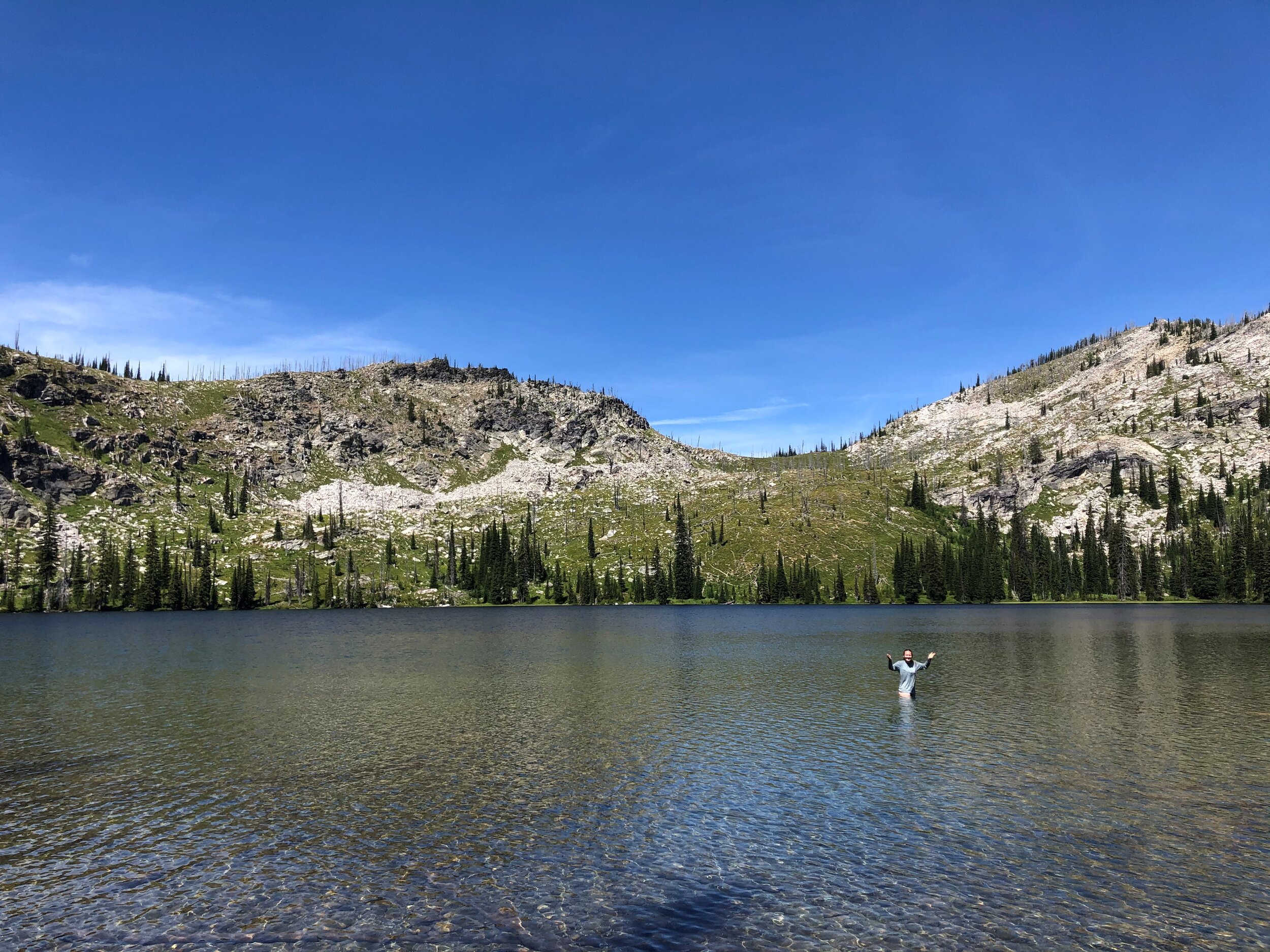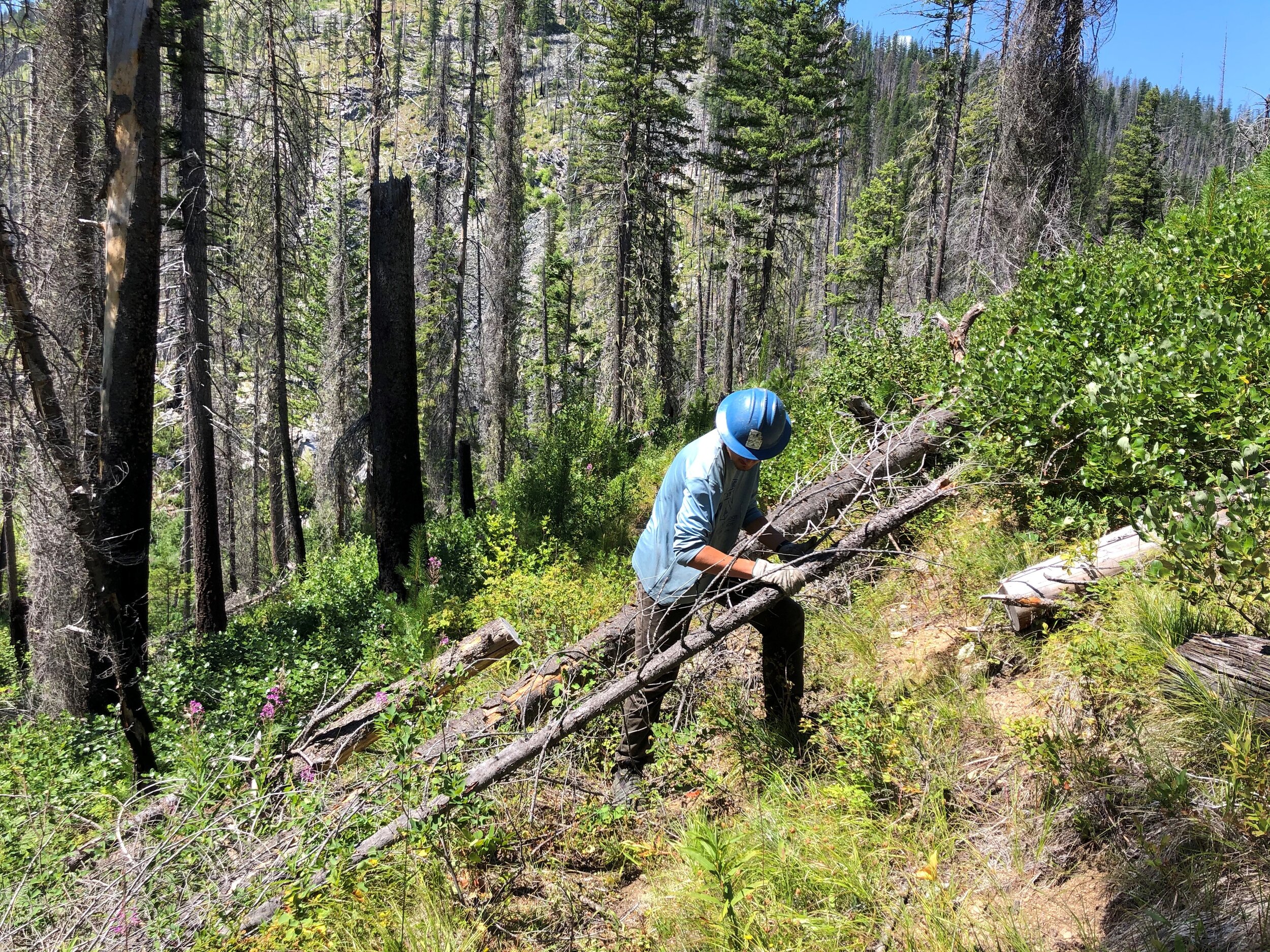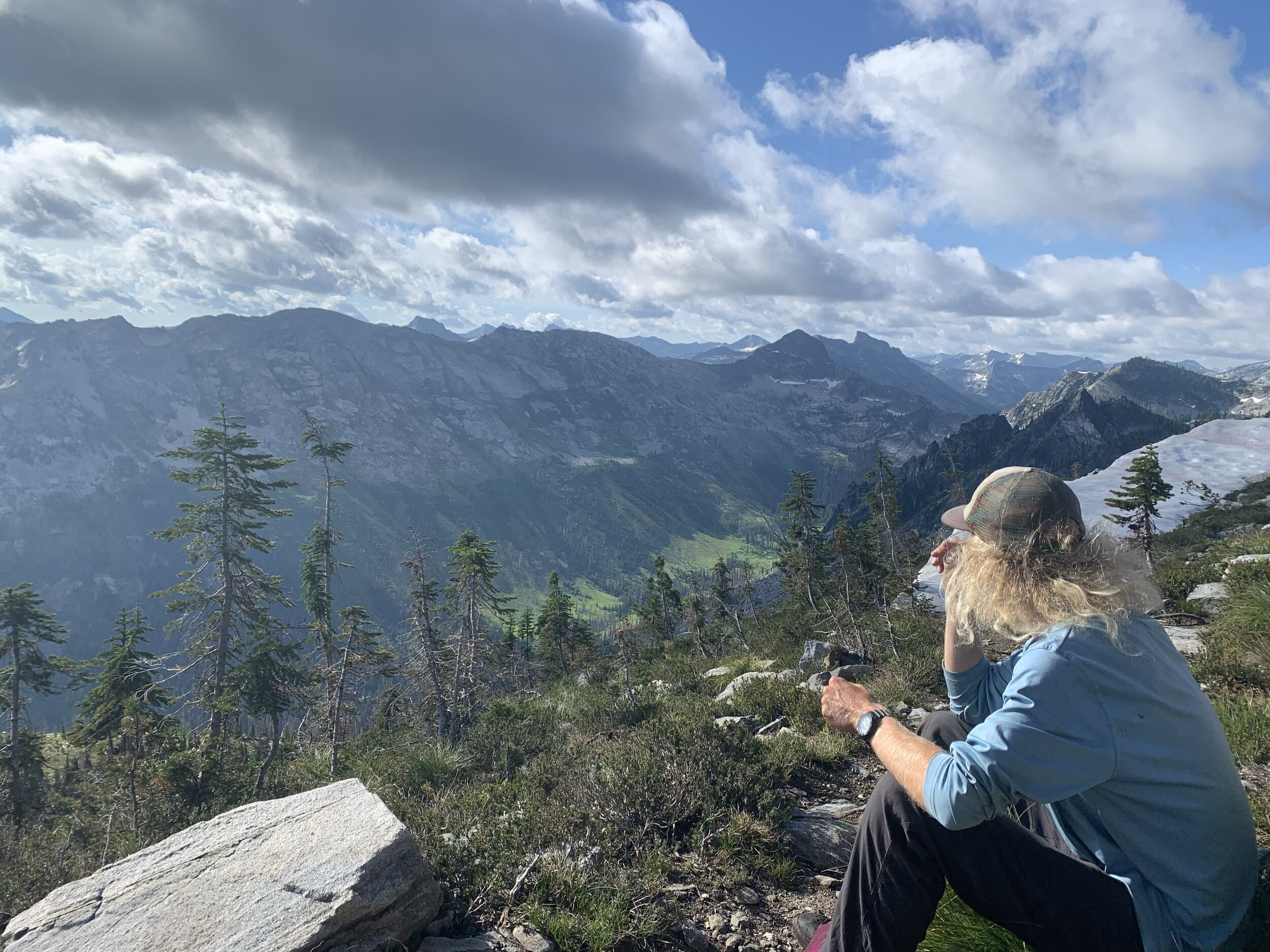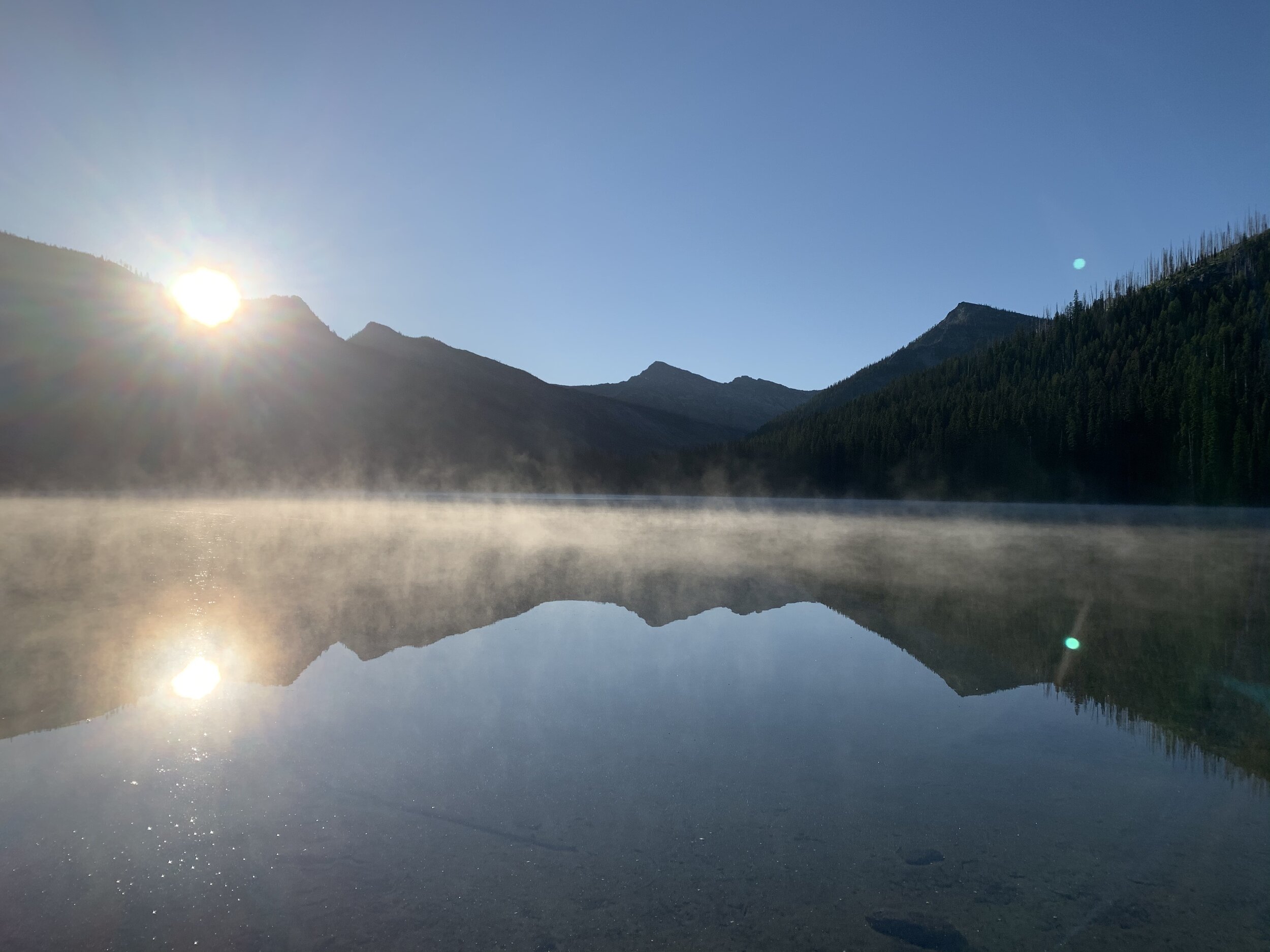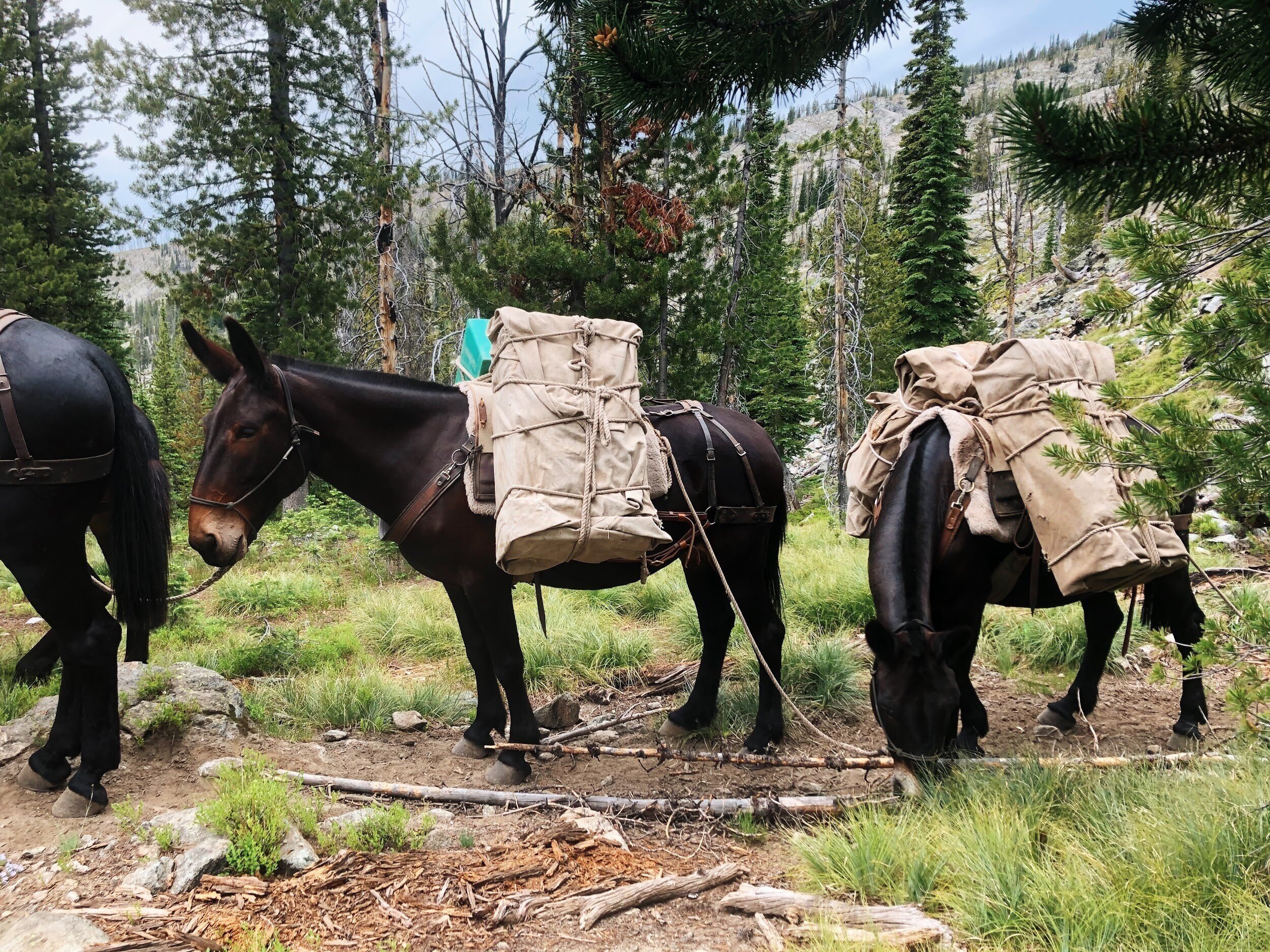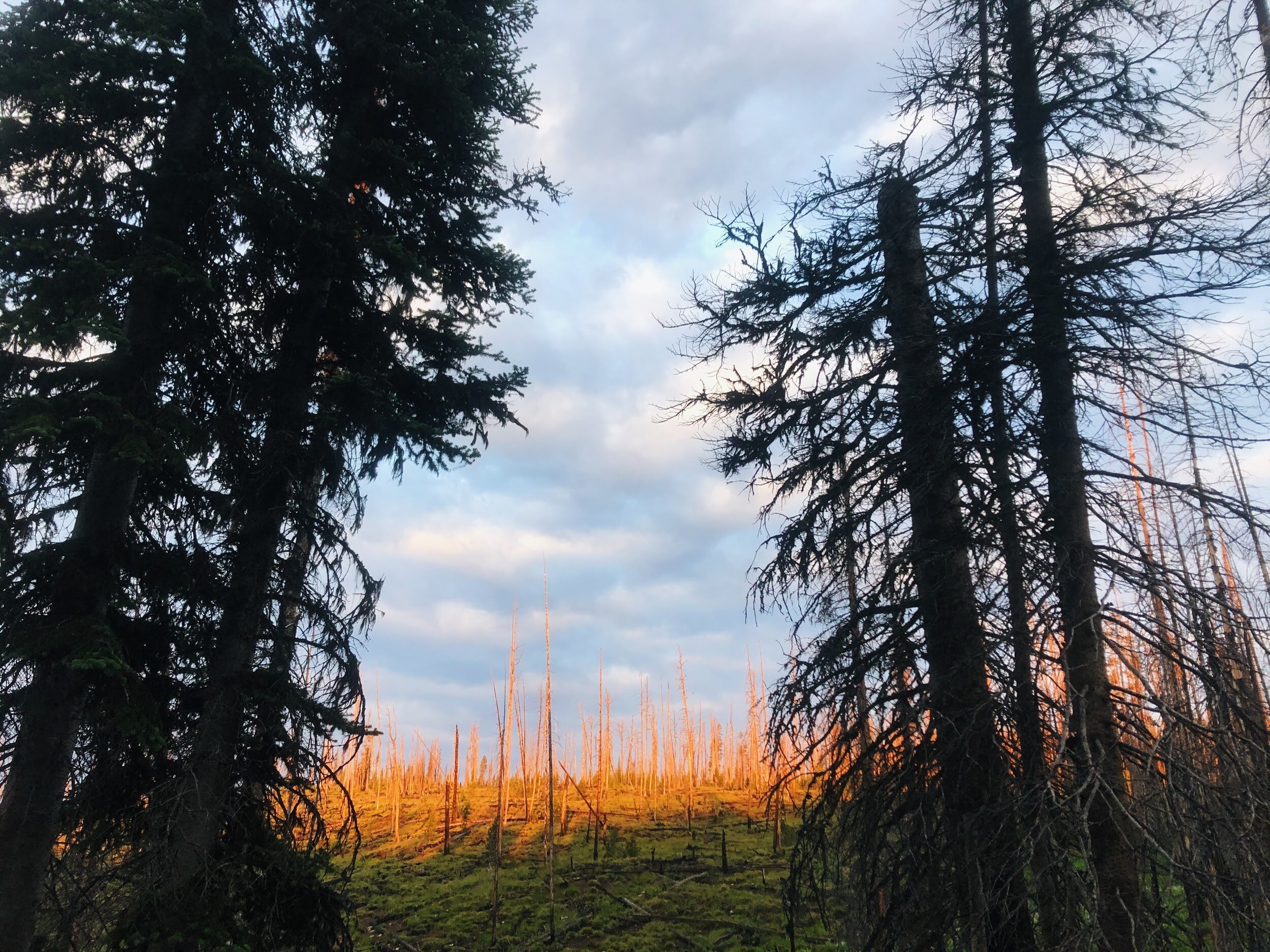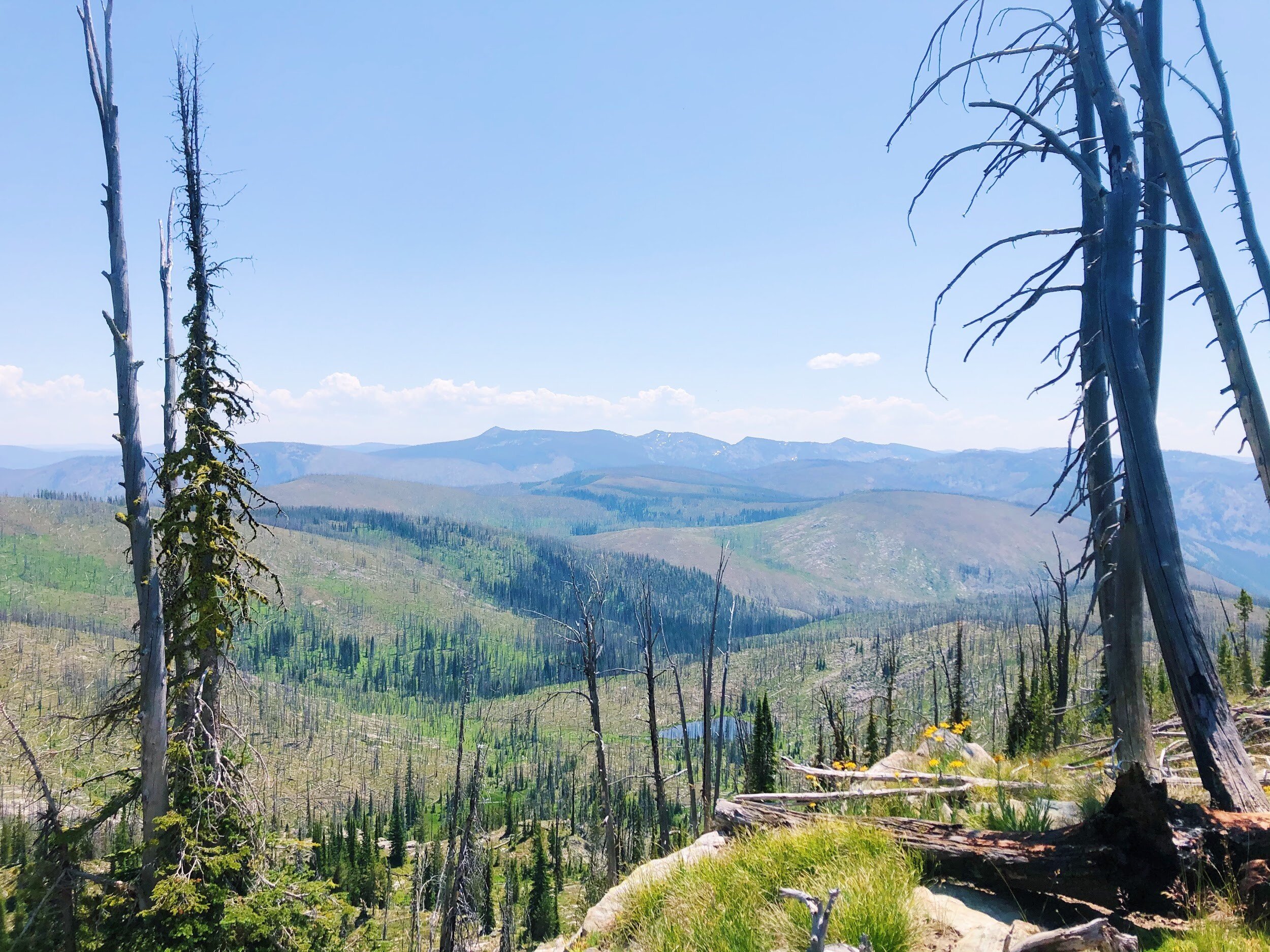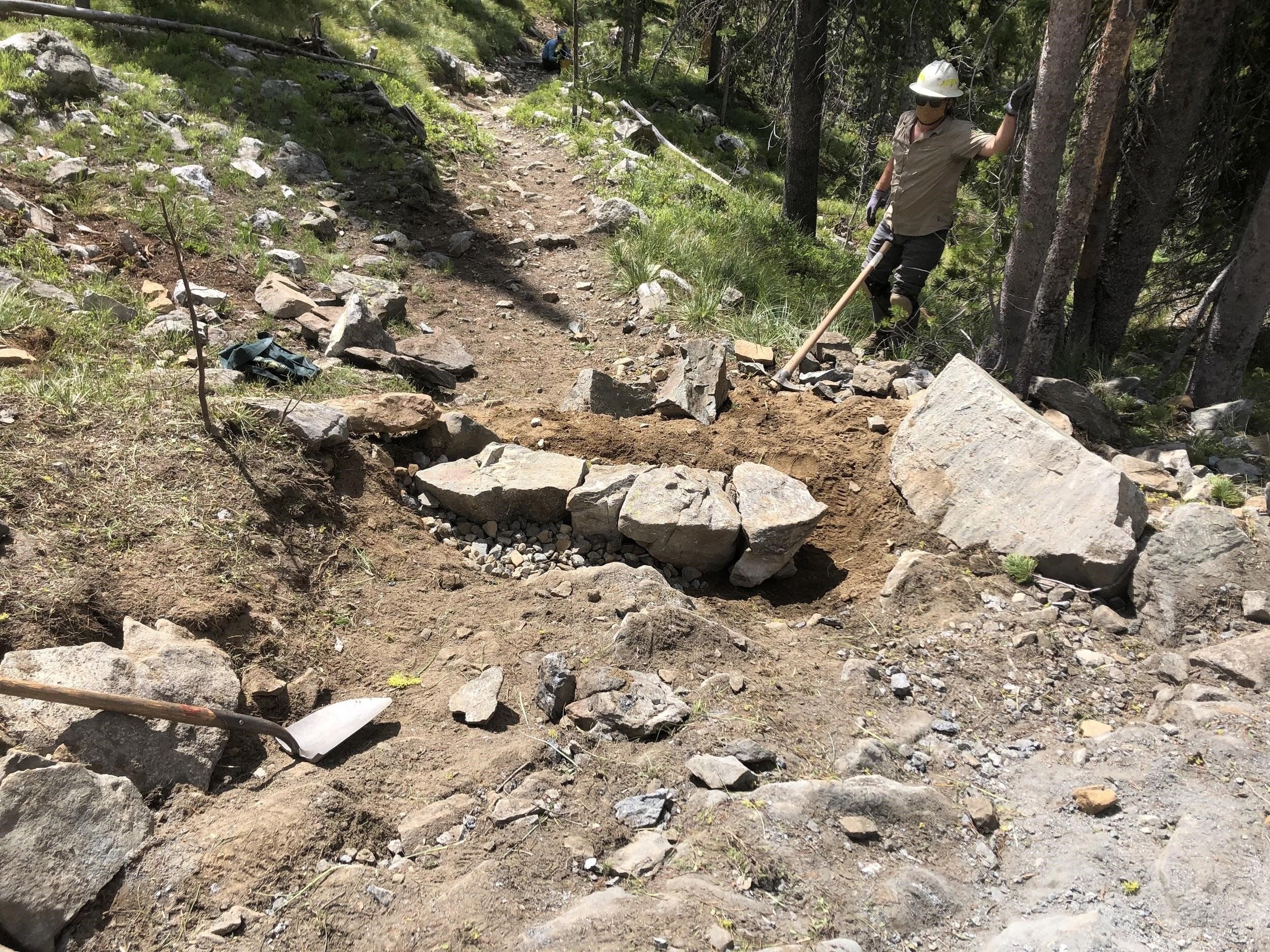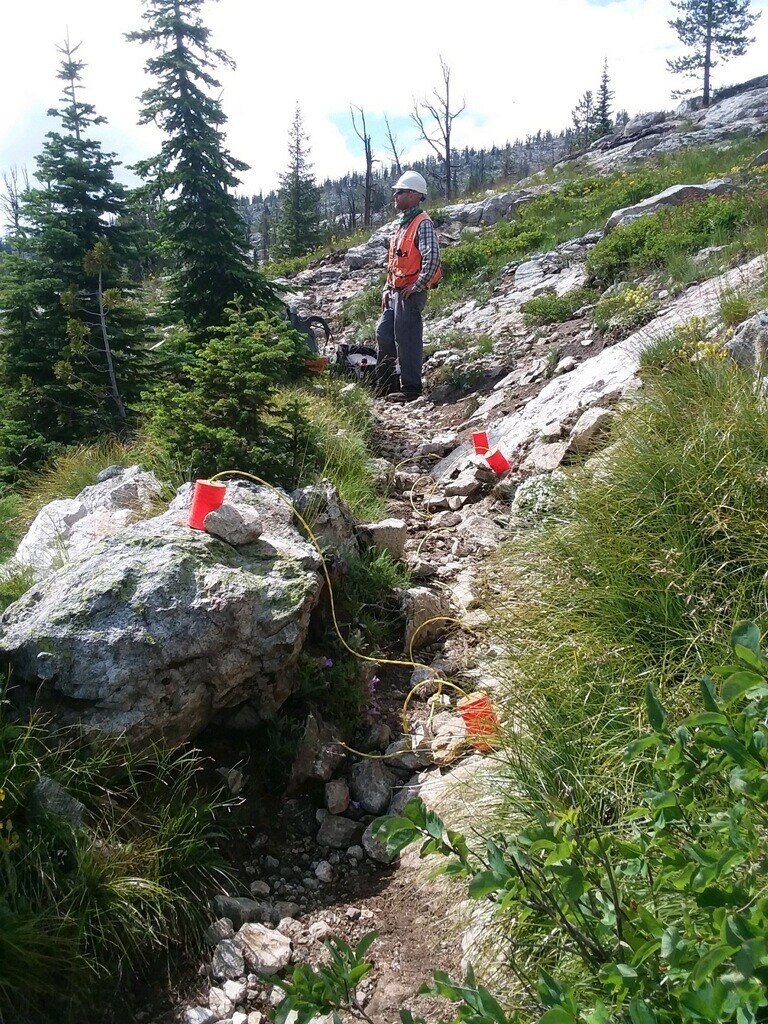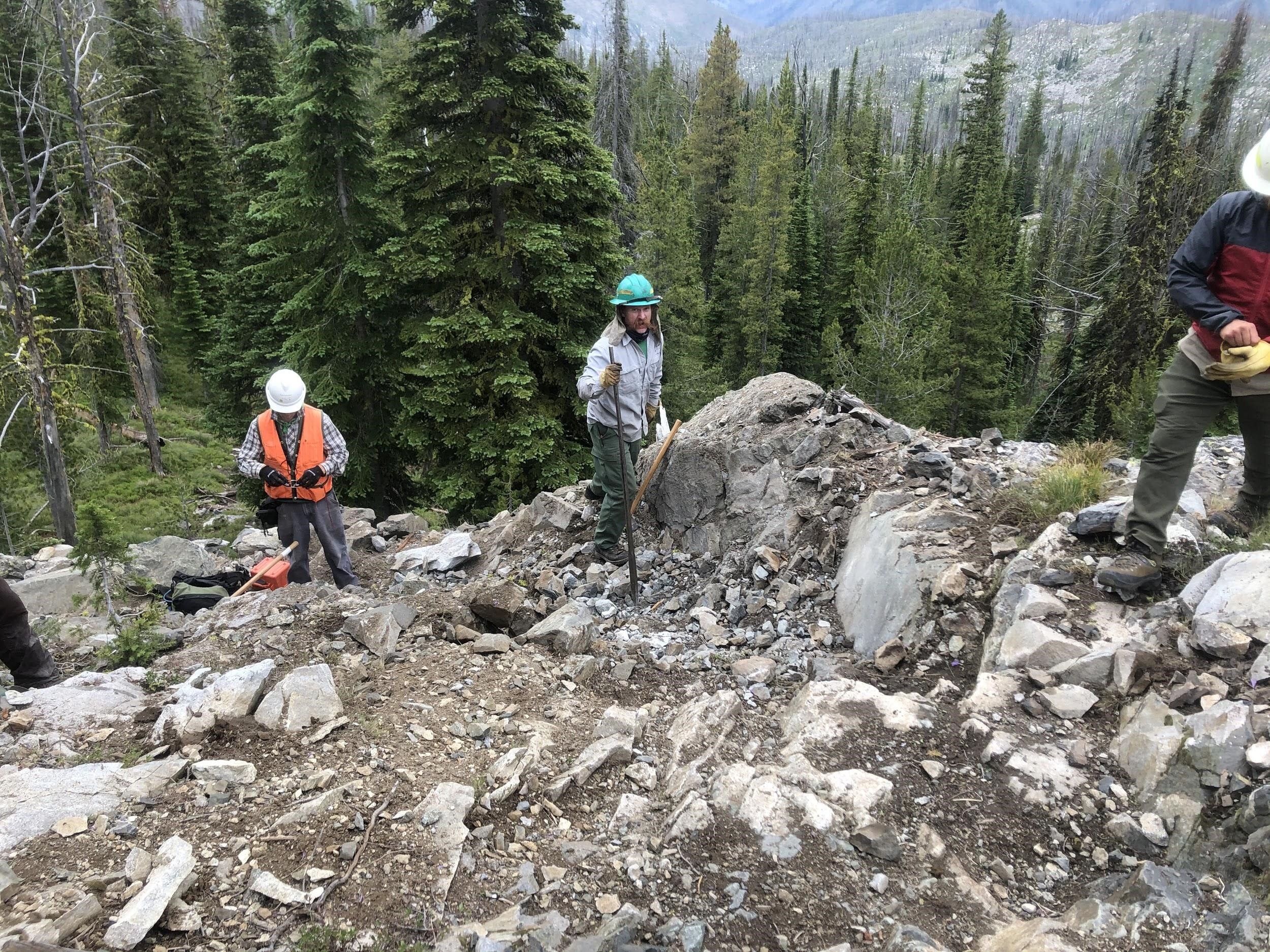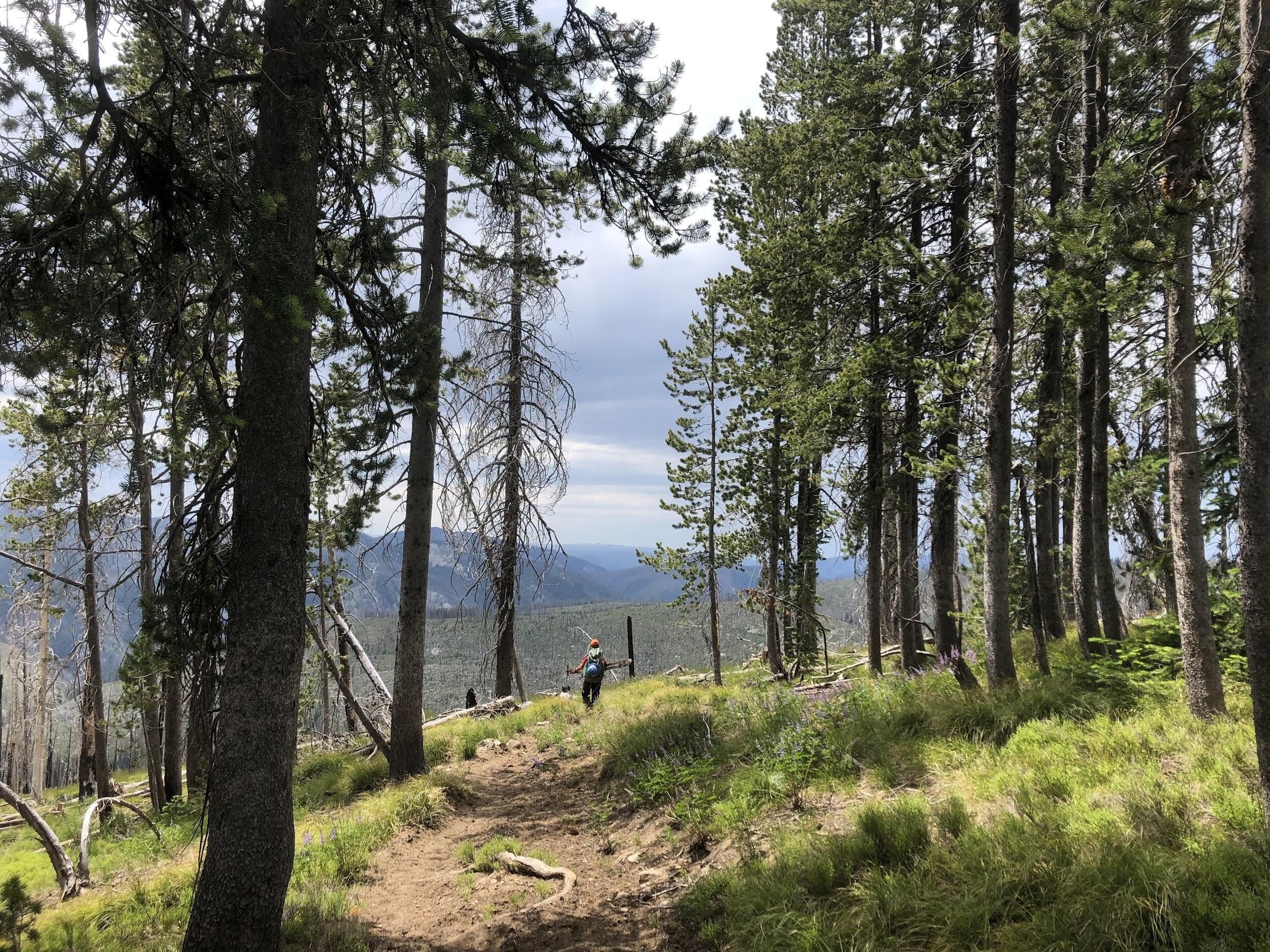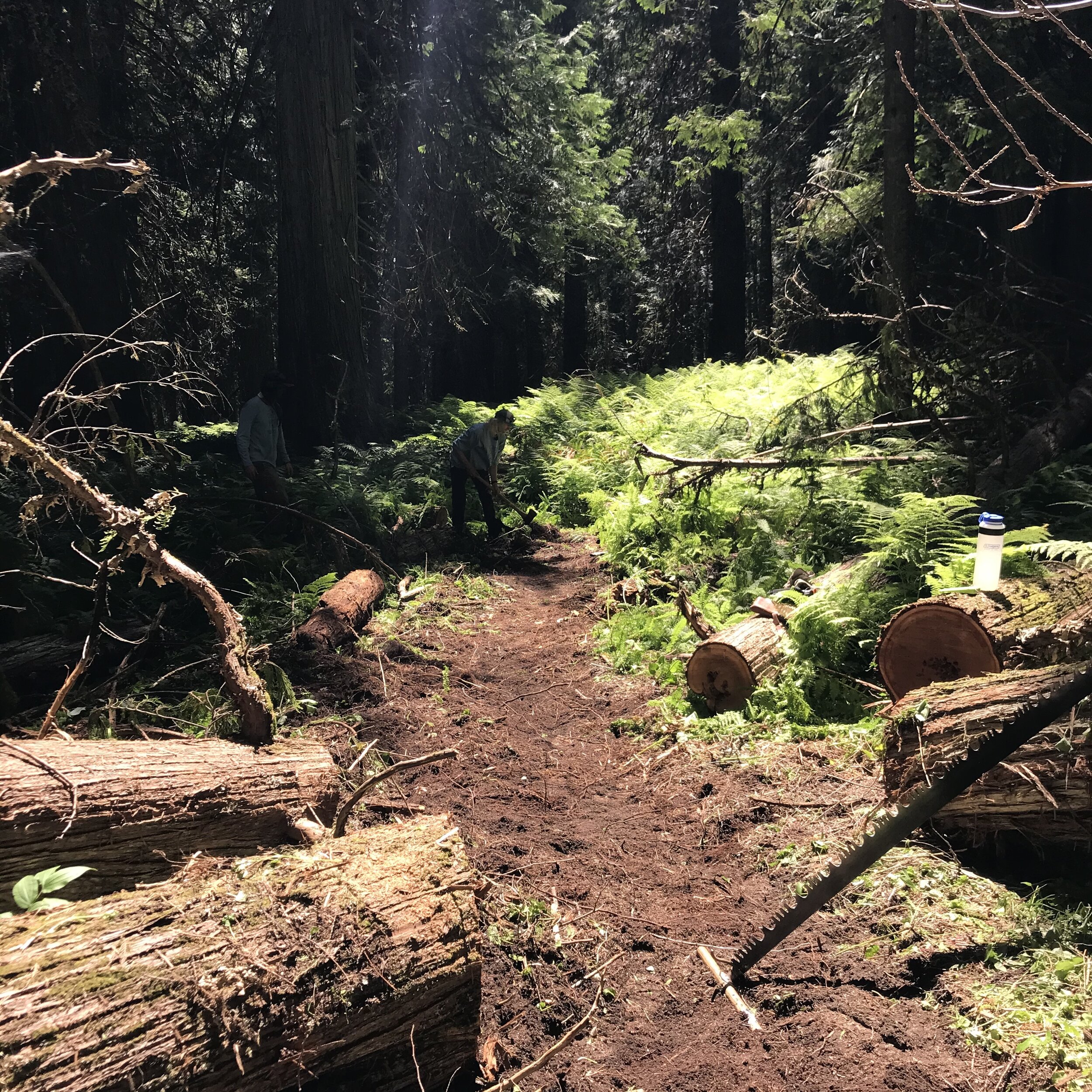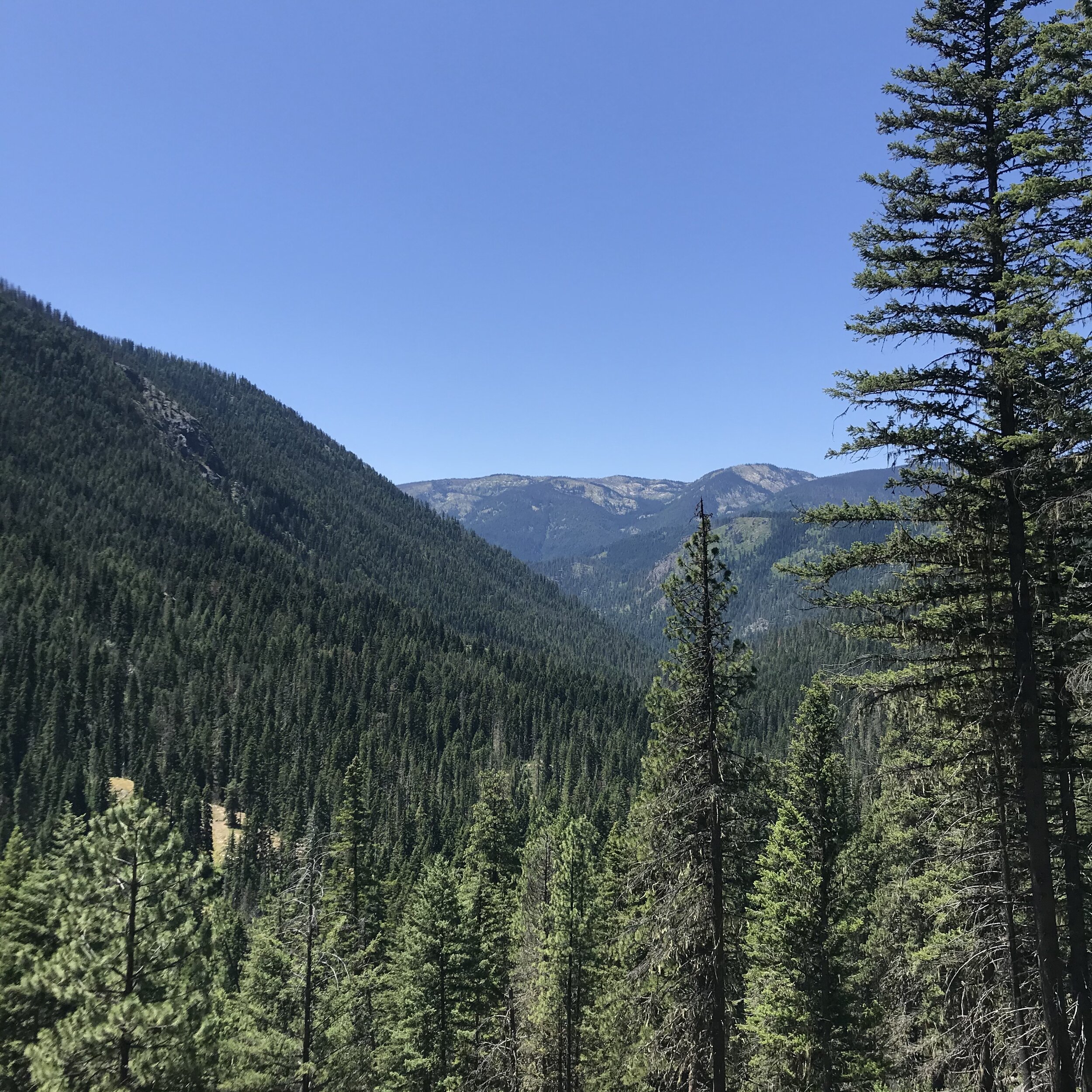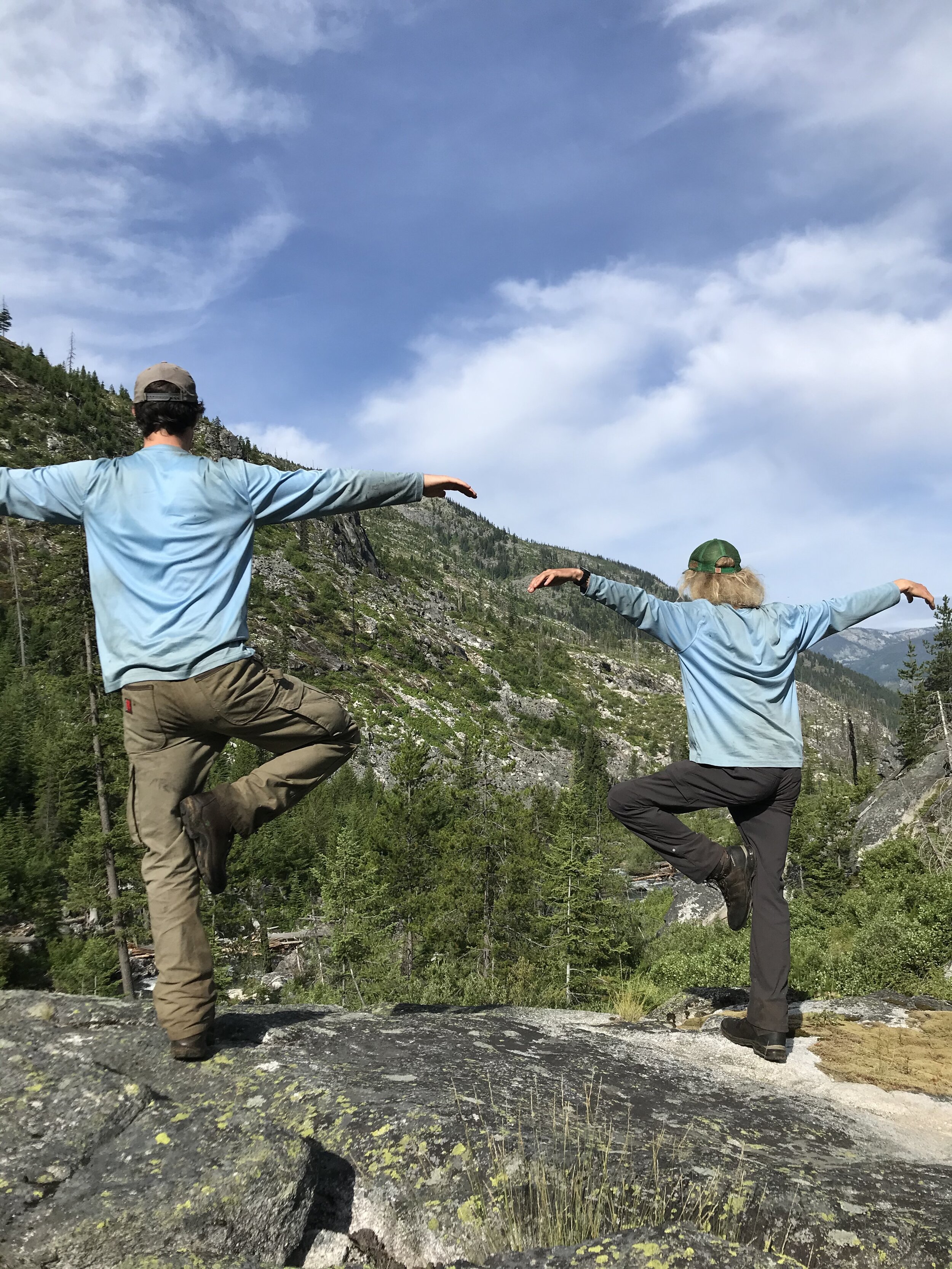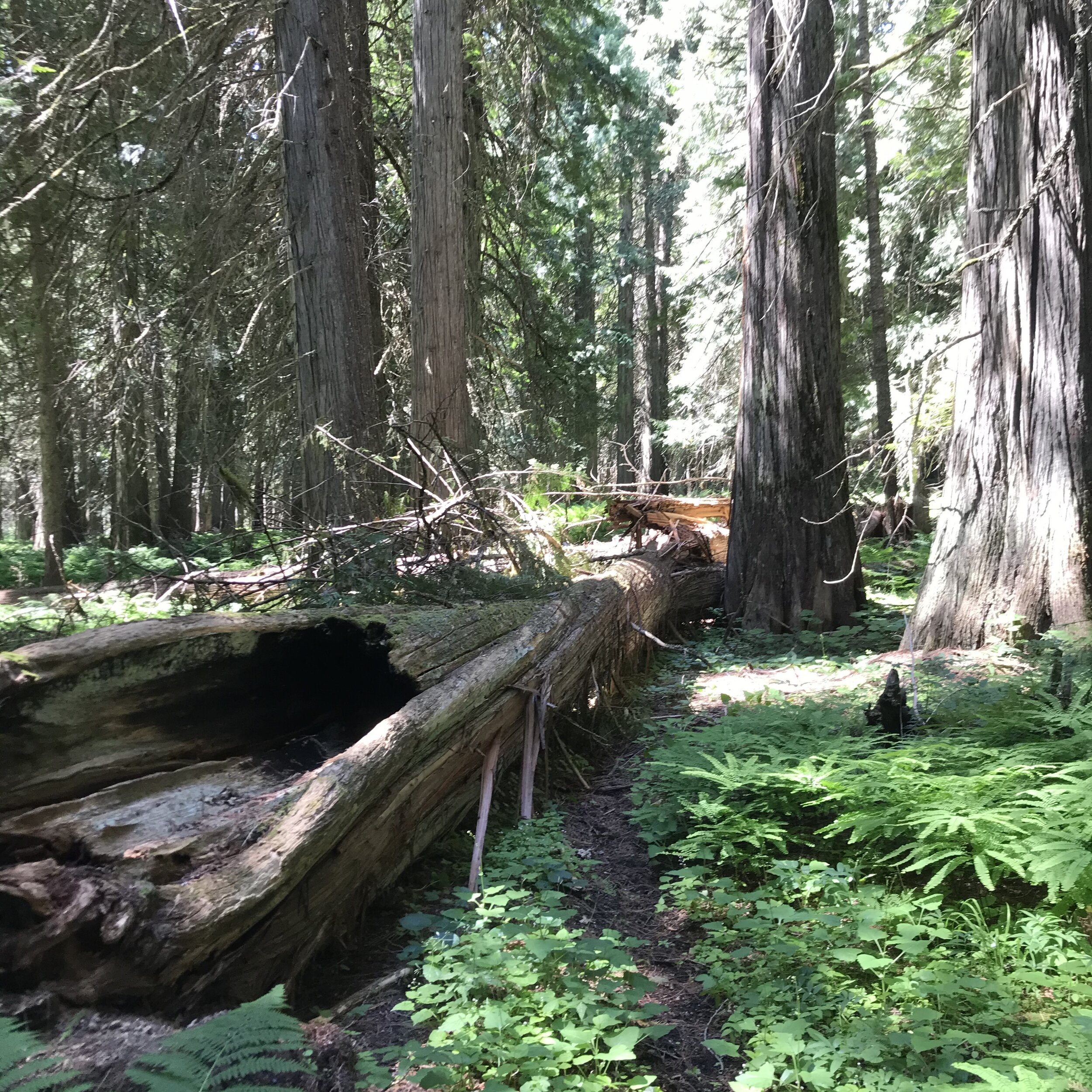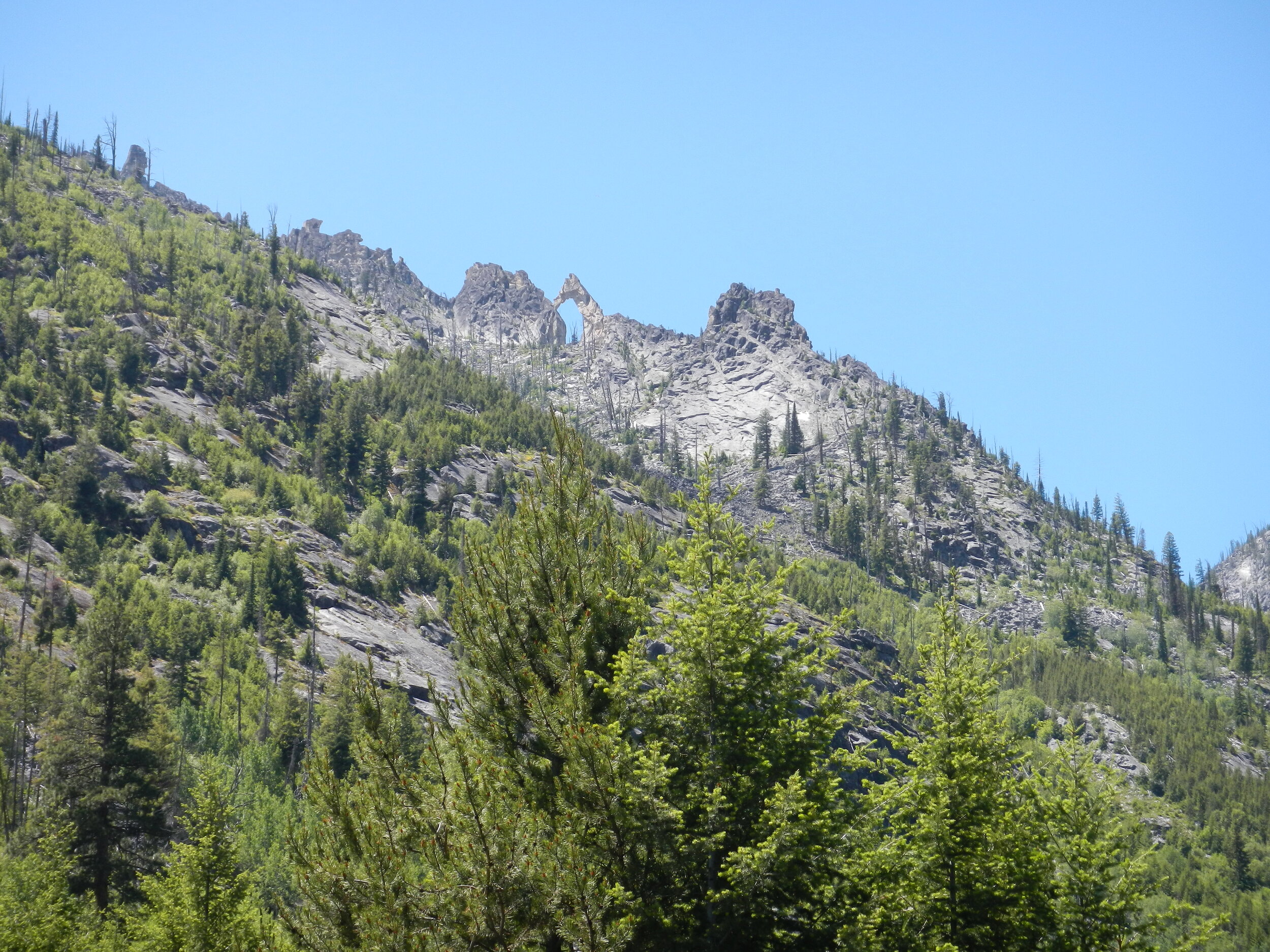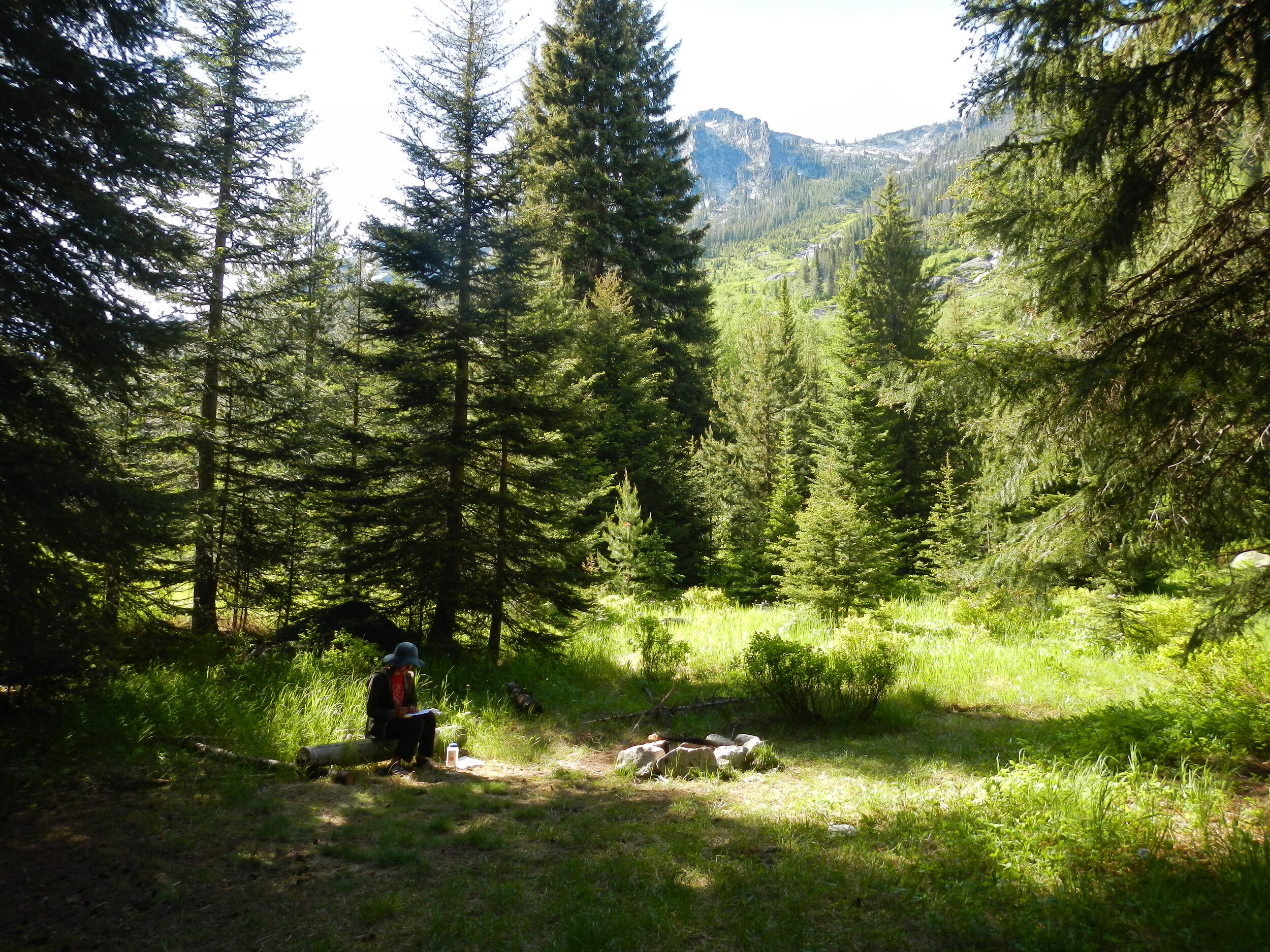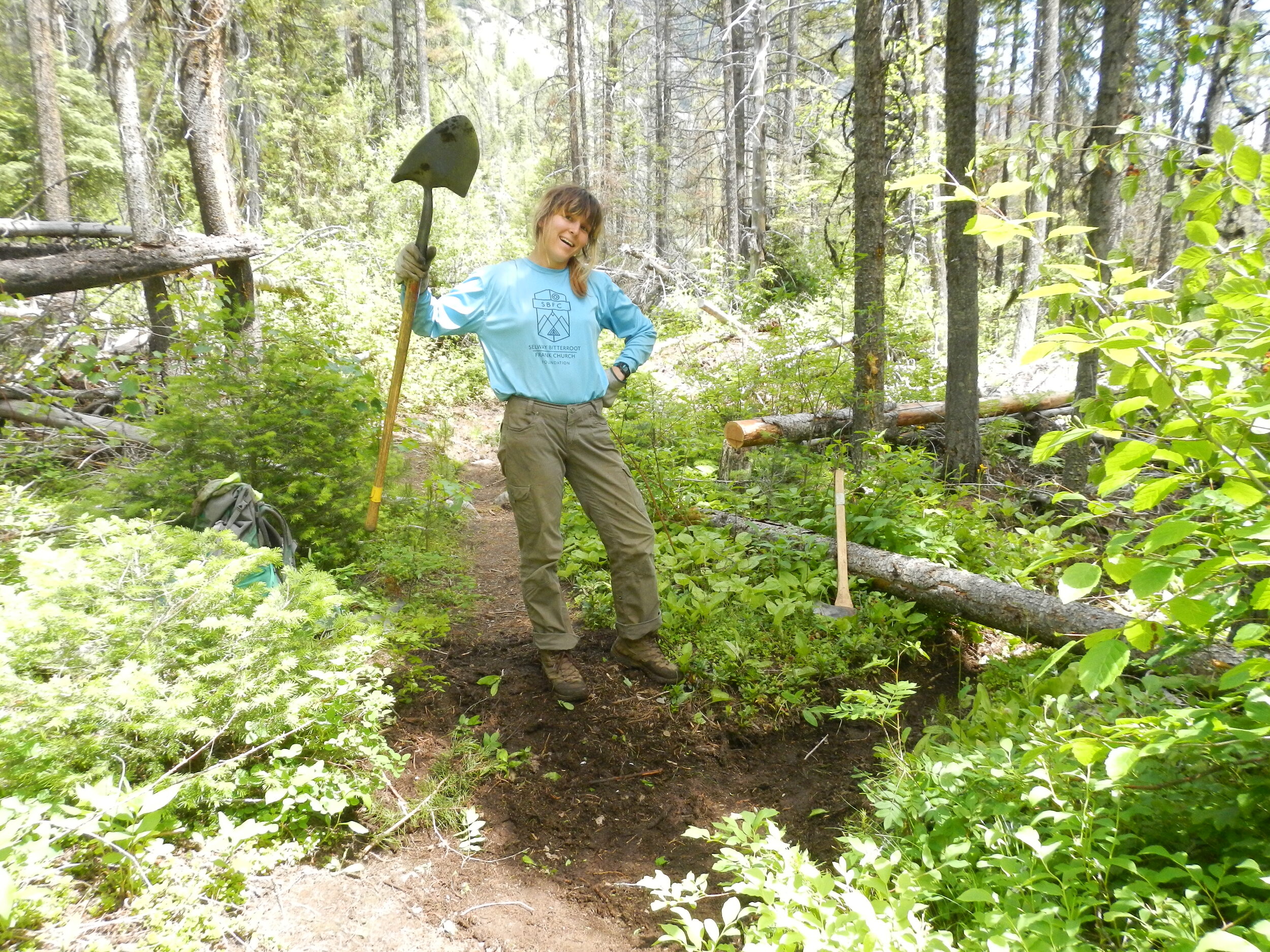Justine Bright
Trail Crew Member
August 19-26
Salmon-Challis National Forest
Clear Creek Trail #022, Bighorn Crags Trail #021
This season was the most varied I have ever experienced. Every hitch was about as different from the last as I could imagine, and each hitch in itself was full of a diverse set of challenges and rewards. We started off our late summer going from a hot, exposed burn area into a sub-alpine snow storm, hiking out a different trail to avoid unsafe walking on the one we worked in on. The following hitch we went to Marble Creek, and each day I woke and put on wet socks and sandals to hike through stream crossings and frosty strawberry plants. My feet ached with cold on the frozen ground, but I knew that by the afternoon I would do anything to get out of the heat and sun. I am constantly humbled during our work by the rhythm of the day and the character of the places we go. It feels like such abundance, to be in touch with the weather systems, what is flowering or fruiting or starting to turn color and dry out, the water level of the streams, and the length of the days. That is what I miss anticipatorily while we’re working, as well as the work itself.
Our past two hitches were out of the Bighorn Crags - the most popular area we work in, but it’s not overestimated. Getting to camp at lakes for more than one night of a hitch is probably one of the best rewards for our work during the day, and I felt so taken care of in the Crags. The huckleberries were in full swing while the smoke and shorter days reminded me that fall would be changing this place and our lives soon. We got to watch a fantastic thunderstorm from our campsite on a ridge by Sagebrush Lookout, and could see lightning striking the hills around us. Storms continued through the night, and the next morning we got a welcome break from the thick smoke. The sky was brilliantly pink and orange, and we could glance at the red sun, warped by pressure, without feeling its intensity.
During our last hitch at the Crags we found a mushroom guttating- secreting excess water from pores in the fruiting body. It looked like it was seeping amber. They do this after a period of sped-up growth during nourishing conditions. Every time we passed it, I was totally filled with joy and gratitude for the growing conditions we’ve had.











